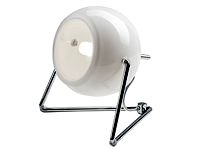UNICO
MITA
SASSO
FRAME
TASK
MOVE IT
COMBO
INO
MINO
Requirements
• Reception: counters with higher Illuminance levels to
separate registration and waiting area
• Waiting room: warm light colours and dynamic light
sequences for well-being
• Waiting room: basic brightness min. 200 lux
• Consulting room: illuminance of 500 lux
• Examination areas: up to 1000 lux and sometimes more
Orientation and relaxation
in the doctor's offi ce
In medical practices, various specifi c lighting solutions are required, be it the registration desk
at the reception, the waiting room, or the patient consultation in the examination room. The
reception is a medical practice's business card and a patient's fi rst point of contact. It should
be lit in a bright and friendly manner and off er patients orientation. Separate accent lighting can
add emphasis to the reception area and guide visitors more clearly through the practice.
Staff , however, spend many hours at the computer. Thus, attention must be paid to ergonomic,
standard-compliant computer workstation design. An UGR maximum value of 19 ensures mod-
erate contrast glare. An eye-friendly UGR value of ≤ 16 or ≤ 13 can be achieved with a high indi-
rect light component. Higher illuminance is generally recommended above the desk. This cre-
ates good visibility and a visual separation between the reception, entrance, and waiting areas.
Above all, the reception is an area of communication, so it is even more important to create an
atmosphere of trust and security. Cylindrical illuminance should be at least 150 lux at eye level.
The modifi ed value of 300 lux is better suited. This can be achieved with suspended luminaires
above the counter or indirect light from the wall or ceiling. For good communication, the ratio of
cylindrical to horizontal illuminance is defi ned as between 0.3 and 0.6 in the lighting standard.
This modelling indicator shows how well the face and facial expressions are recognisable,
which infl uences our interactions decisively.
Lighting plays a calming role in the waiting room. EN 12464-1 stipulates a basic brightness of
200 lux. However, to ensure that patients have suffi cient light when reading or completing
questionnaires, a signifi cantly higher illuminance is recommended. Warm-toned light in waiting
rooms has a relaxing eff ect, lowers stress levels, and conveys a sense of security. In doctors'
consulting rooms, at least 500 lux is required; in examination and treatment rooms, 1000 lux is
required on the examination areas. It is important to use luminaires in the practice that have
good glare control so that patients lying down are not dazzled from above. A high indirect light
component improves the UGR value and reduces the contrast to the light emission surface.
55
xal.com/medical-practices







